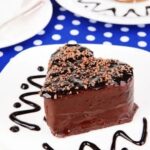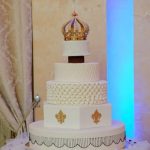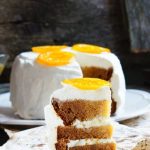Are you looking to elevate your cake decorating skills? Learn how to use fondant to decorate cakes and take your creations to the next level. Fondant is a versatile and popular choice for creating beautifully decorated cakes, making it an essential skill for any aspiring baker or pastry chef. In this article, we’ll explore the basics of fondant, its importance in cake decorating, and provide step-by-step instructions to help you master the art of working with fondant.
Fondant is a smooth, pliable icing that can be rolled out and draped over cakes to create a flawless finish. It allows for endless creative possibilities, from simple designs to intricate decorations. Understanding how to properly work with fondant is crucial for achieving professional-looking results, whether you’re decorating a birthday cake or a wedding masterpiece.
As we delve into the world of fondant decoration, we will cover everything from choosing the right type of cake for fondant application to troubleshooting common issues that may arise during the decorating process. Whether you’re a novice looking to learn the basics or an experienced baker seeking new techniques, this article will provide valuable insights and inspiration for using fondant to decorate cakes.
Get ready to unleash your creativity and impress your friends and family with stunning fondant-decorated treats.
Getting Started
When it comes to using fondant to decorate a cake, the first step is to choose the right cake for this type of decoration. Not all cakes are ideal candidates for fondant, and it’s important to select one that can support the weight and structure of the fondant covering.
Typically, dense and sturdy cakes such as pound cake, sponge cake, or mud cake work best for fondant decoration. These types of cakes provide a stable base and won’t collapse under the weight of the fondant.
In addition to choosing the right type of cake, it’s also crucial to properly prepare the cake before applying fondant. This includes leveling the top surface of the cake to ensure a smooth and even foundation for the fondant layer.
It’s also recommended to apply a thin layer of buttercream or ganache on the cake before covering it with fondant. This not only helps the fondant adhere to the cake but also provides a moist layer that enhances the flavor and texture of the overall dessert.
Once you have chosen and prepared your cake, you are ready to move on to applying your fondant. Learn how by reading our next section on “Working with Fondant: Tips and Techniques for Rolling, Shaping, and Handling Fondant”.
Working With Fondant
Fondant is a versatile and fun ingredient to use when decorating cakes. Whether you’re a beginner or an experienced baker, learning how to use fondant to decorate a cake can take your creations to the next level. In this section, we will explore some valuable tips and techniques for rolling, shaping, and handling fondant.
Firstly, it’s essential to start with the right consistency of fondant. If your fondant is too dry, it will crack and tear when rolled or shaped. On the other hand, if it’s too sticky, it will be challenging to work with. To achieve the perfect consistency, knead the fondant until it becomes pliable and smooth. Additionally, you can add a small amount of shortening if the fondant feels too dry or powdered sugar if it’s too sticky.
Once you have the ideal texture, rolling out the fondant is the next crucial step. Dust your work surface with powdered sugar or cornstarch to prevent sticking. Use a rolling pin to roll out the fondant into an even thickness, turning it occasionally to ensure it doesn’t stick. For a perfectly sized covering for your cake, measure its height and diameter before rolling out the fondant.
When shaping and handling fondant, keep in mind that it’s essential to work efficiently because fondant dries out quickly when exposed to air. Use various tools such as cutters, embossers, and shaping tools to create different shapes and textures.
To prevent cracks and tears while working with fondant decorations, handle them gently and use edible glue or water as an adhesive when attaching them to the cake. With these tips in mind, you’ll be well-equipped on how to use fondant to decorate cake like a pro.
Coloring and Flavoring Fondant
Fondant is a versatile and popular choice for decorating cakes, providing a smooth and flawless finish that allows for endless creativity. In this section, we will explore the various ways you can customize the look and taste of your fondant to elevate your cake decorating game.
When it comes to coloring fondant, the possibilities are endless. You can use gel or powdered food coloring to achieve vibrant and custom shades. Remember to start with a small amount of color and gradually add more until you reach the desired hue. Knead the fondant well to evenly distribute the color, and always cover any unused fondant to prevent it from drying out.
In addition to color, you can also flavor your fondant to complement the cake it will adorn. Vanilla, almond, lemon, and even chocolate are popular choices for adding a hint of flavor to your fondant. To do this, simply add a few drops of extract or emulsion while kneading the fondant until the flavor is evenly distributed. Keep in mind that some extracts may affect the consistency of the fondant, so adjust accordingly.
It’s important to note that when coloring and flavoring fondant, a little goes a long way. It’s best to start with small amounts of coloring or flavoring agents and gradually build up as needed. With these tips in mind, you can unleash your creativity and personalize your cakes with uniquely colored and flavored fondant creations.
| Coloring Fondant | Flavoring Fondantt |
|---|---|
| Use gel or powdered food coloring | Add a few drops of extract or emulsion for flavor |
| Knead well to evenly distribute color | Knead until flavor is evenly distributed |
| Start with small amount of color an dadd more as needed | Consider how certain extracts may affect consistency |
Covering the Cake
Covering a cake with fondant can seem daunting, but with the right techniques and step-by-step instructions, it can be a fun and rewarding experience. Before you begin, it’s important to choose the right type of cake for fondant decoration.
A firm, dense cake such as pound cake or mud cake works best, as it provides a sturdy base for the fondant. Additionally, make sure to apply a layer of simple syrup or buttercream to the cake before covering it with fondant to help the fondant adhere and stay moist.
When working with fondant to cover a cake, it’s crucial to roll out the fondant to an even thickness. Using a non-stick rolling pin and a dusting of cornstarch or powdered sugar on your work surface can prevent sticking.
Start by rolling out the fondant into a circle that is about 2 inches larger in diameter than your cake. Once rolled out, carefully drape the fondant over the cake and smooth it down with your hands, working from the top center down to the sides.
To achieve a smooth finish when covering your cake with fondant, use a fondant smoother to gently press out any air bubbles and creases. Work your way around the entire surface of the cake until all wrinkles are smoothed out. If tears or cracks appear during this process, simply use a small amount of vegetable shortening on your fingers to gently massage and blend them back together seamlessly.
Whether you’re decorating a birthday cake or a wedding masterpiece, mastering the art of covering cakes with fondant opens up endless possibilities for creativity. Now that you have learned how to use fondant to decorate cakes by smoothly covering them in this step-by-step process, you are ready to move on to adding intricate designs and textures using fondant in our next section”.
Adding Details
Once you have successfully covered your cake with fondant, it’s time to add some intricate designs, textures, and decorations to take your cake to the next level. Here are some techniques for creating stunning details using fondant:
- Embossing: Use embossing mats or rolling pins to create intricate patterns and textures on your fondant. Simply roll the embossing tool over the fondant to transfer the design onto the surface.
- Modeling: Fondant can be shaped into various objects and figures to adorn your cake. Whether it’s flowers, animals, or other objects, molding fondant allows you to get creative and personalize your cake design.
- Cutting and Shaping: Use cookie cutters, stencils, or specialized tools to cut out shapes and designs from fondant. You can then layer these pieces on top of the cake for a beautiful 3D effect.
It’s important to remember that working with fondant requires precision and patience. Take your time when adding details to ensure a flawless finish. Experiment with different techniques and tools to find what works best for you and your desired cake design.
Ultimately, adding details with fondant is where your creativity can truly shine. Whether you’re going for a whimsical theme with colorful shapes and embellishments or a more elegant look with delicate floral designs, fondant provides endless possibilities for decorating cakes.
By mastering these techniques, you’ll be able to create show-stopping cakes that are not only visually stunning but also delicious works of art.
Troubleshooting
Cracking and Tearing
One common problem when working with fondant is cracking and tearing. This can occur if the fondant is rolled too thin or if it dries out too quickly. To prevent this, make sure to roll the fondant to an even thickness and work in a cool, dry environment. If cracking does occur, try gently pressing the cracks together with your fingers or use a small amount of water as adhesive to repair the tears.
Air Bubbles
Another issue that cake decorators often encounter when using fondant is air bubbles forming beneath the surface. To avoid air bubbles, make sure to smooth the fondant onto the cake gradually from the center outwards, applying gentle pressure as you go. If air bubbles do appear, use a small pin to carefully prick the bubble and then smooth the fondant back over it.
Sagging and Stretching
Fondant can sometimes sag or stretch while covering a cake, especially in warmer temperatures. To prevent this, ensure that your cake is properly chilled before applying the fondant and work quickly but carefully during the covering process. If sagging does occur, gently lift and reposition the fondant while smoothing it back into place with your hands.
By being aware of these common issues and knowing how to address them, you can troubleshoot any problems that may arise when working with fondant to decorate your cakes. By mastering these solutions, you’ll be able to create beautifully decorated cakes that are sure to impress your family and friends.
Inspiration and Ideas
When it comes to decorating cakes with fondant, the possibilities are endless. Whether you’re a beginner looking for ideas or an experienced cake decorator seeking inspiration, there are countless ways to use fondant to create stunning and impressive designs. Below, we’ll explore some exciting ideas for using fondant to decorate cakes.
Wedding Cakes
One of the most popular uses of fondant for cake decoration is in creating elegant and elaborate wedding cakes. Fondant allows for smooth, flawless finishes and intricate detailing, making it the perfect choice for creating tiered masterpieces that will leave a lasting impression on wedding guests.
Themed Cakes
Fondant also lends itself well to creating themed cakes for special occasions. From children’s birthday parties to milestone celebrations, fondant can be shaped and molded into almost any design imaginable. Whether it’s a favorite cartoon character, a beloved animal, or a specific hobby or interest, fondant provides the versatility needed to bring any theme to life on top of a cake.
Celebration Cakes
For any type of celebration – from baby showers and anniversaries to retirement parties and graduations – fondant provides an opportunity to add a touch of luxury and personalization to the cake. Whether it’s incorporating edible glitter, metallic finishes, or vibrant colors, there are endless ways to use fondant to create show-stopping centerpieces for any special event.
By showcasing these stunning examples of fondant-decorated cakes, we hope we’ve sparked your creativity and provided you with plenty of inspiration for your own projects. With the right techniques and practice, you too can create beautiful works of edible art using fondant as your medium. So go ahead – let your imagination run wild and see where your fondant decorating skills take you.
Conclusion
In conclusion, fondant decoration is a versatile and artistic way to elevate the look of any cake. From elegant wedding cakes to playful birthday confections, fondant offers endless possibilities for customization and creativity. By understanding the basics of fondant, learning how to work with it, and exploring various coloring and flavoring techniques, anyone can create stunning designs and intricate details on their cakes.
Choosing the right cake and properly preparing it for fondant decoration is essential for achieving a smooth and professional finish. Whether using homemade or store-bought fondant, rolling, shaping, and covering the cake requires patience and precision. However, with practice and the right techniques, covering a cake with fondant can become second nature.
Whether it’s creating delicate flowers, intricate patterns, or 3D figurines, adding details with fondant allows bakers to express their individual style and artistic vision. While troubleshooting common problems may arise when working with fondant, such as cracking or tearing during application or difficulties achieving vibrant colors. With perseverance and by following best practices in handling fondant, any baker can master the art of using fondant to decorate cake.
Frequently Asked Questions
How Do You Put Fondant on a Cake for Beginners?
Putting fondant on a cake for beginners involves rolling out the fondant to the desired size, then carefully placing it over the cake and smoothing it to remove any air bubbles or wrinkles. It’s important to work slowly and patiently to avoid tearing or stretching the fondant.
Can You Put Fondant Directly on a Cake?
Yes, you can put fondant directly on a cake. However, it’s important to make sure that the cake is properly prepared with a thin layer of buttercream or ganache to help the fondant adhere to the surface. This will also help create a smooth base for the fondant.
How Do You Get Fondant Decorations to Stick to a Cake?
To get fondant decorations to stick to a cake, you can use a small brush to lightly moisten the back of each decoration with water or edible glue before gently pressing it onto the cake. It’s important not to use too much moisture, as this can cause the decorations to become soft and lose their shape.
Alternatively, you can also use additional fondant as “glue” by brushing a small amount of water onto the back of the decoration and pressing it onto the cake.

Welcome to my blog about home and family. This blog is a place where I will share my thoughts, ideas, and experiences related to these important topics. I am a stay-at-home mom with two young children. I hope you enjoy reading it! and may find some helpful tips and ideas that will make your home and family life even better!





